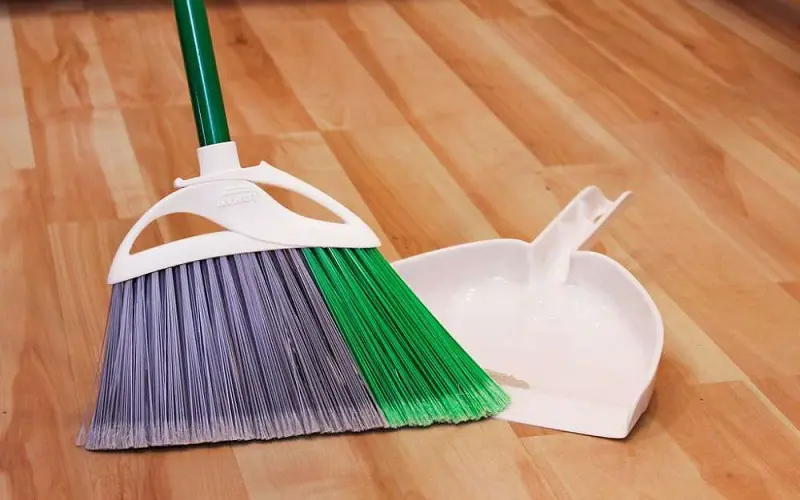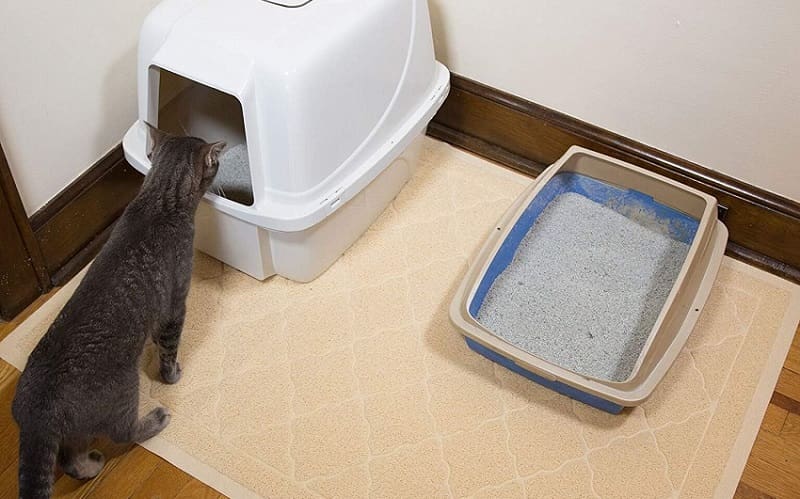Last Updated: 1 week ago
Keeping the house and carpets litter-free can be a chore, so it’s natural to wonder if you can use your usual vacuum cleaners to make your job easier.
Cats like to dig like crazy when using their cat litter box, so you often find litter particles in the least expected places.
Depending on the type of litter you’re using, your cute feline can leave tons of dusty paw prints all over the floors. It’s no wonder you’re considering grabbing your vacuum cleaner to deal with the mess.
But does cat litter ruin vacuums? The short answer is yes. Litter can damage your regular vacuum cleaner. However, it depends a lot on the type of vacuum you’re using.
How Does Cat Litter Affect Vacuuming Machines?

Many regular vacuum cleaners can handle a little bit of cat litter from time to time. But it’s not a good idea to use it regularly.
Here are five reasons why:
1. Blocked Hoses and Canisters
Most cat owners use clay-based litter brands, which form solid clumps when they absorb liquids, such as urine.
As such, vacuuming soiled litter can clog your cleaner’s hoses and canister. It will be almost impossible to unblock them without inflicting further damage.
Moreover, think about how hard soiled litter is. Often, you have to scrape the remaining cement-like residue from the litter box to clean it.
Imagine it inside your vacuum cleaner, sticking to the canister walls and hoses! It will slowly destroy your machine in a couple of months.
2. Damaged Electrical Components
Fresh litter is no less dangerous than soiled litter. That’s because it’s rocky and sharp and can damage your cleaner’s suction and filtration system.
Moreover, the litter is small enough to reach the motor, where it will wreck the internal components.
Even if you don’t damage your machine’s motor and filtration system, think about the hoses! The hoses are one of the first parts to replace, even when you don’t deal with litter.
And most brands on the market aren’t the best for dealing with wet messes, so they’re useless for some types of litter, such as pellet litter.
3. Clogged Filters
Clay dust is a big problem for regular cleaners because it can clog the filters and wreck the filtration system.
Moreover, vacuuming cat litter dust can spread fine particles into the air. If you have a heating or air conditioning system, the clay particles will be all over the house.
That’s a big problem for people and animals with allergies and asthma.
4. Unpleasant Odors
As previously mentioned, hoses, canisters, and brushes can easily trap litter. If you can’t get all the dust particles out, it’s going to get stinky in just a few weeks.
Worse, you can spread the unpleasant smell all over the house when you’re vacuuming the flooring, carpets, and furniture.
And since the particles are so small, you’ll have a hard time getting rid of the odor buildup.
5. Litter Everywhere
Vacuuming near the litter box will send litter and dirt flying in every direction. Then you’ll have a much bigger mess to deal with.
Different Ways to Pick Cat Litter

Since a standard vacuum machine won’t do a good job at picking up litter, let’s talk about what other options you have at your disposal.
1. Sweep
Sweeping with a broom or a sweeper is the easiest way to pick up cat litter and avoid damage to your machine. Just clean up the majority of the mess and vacuum the surface afterward.
2. Use a Carpet Rake
All cat owners know the struggle of getting pet hair out of the carpet. Cleaning embedded litter from the carpeted floors is also not the easiest task.
Fortunately, you can use a carpet rake to get the majority of litter particles out of the carpet.
Then you can vacuum the carpet surface to remove the rest of the dirt and debris.
3. Get a Vacuum Cleaner for Cat Litter
As I already said, standard machines won’t last long before they break. However, some types of vacuums with powerful suction and bypass flow motors are suitable for handling litter.
Unfortunately, these powerful shop vacuum machines have a high price tag. More about what features to consider when you’re shopping for the best vacuum for cat hair and litter in a bit.
4. Use a Handheld Vacuum
Handheld vacuuming machines are another suitable tool for picking up cat litter. They’re light, easy to use, and can reach into tight places.
Keep in mind that the litter can still damage them if you aren’t careful, and they don’t have the same capacity as big ones.
Alternatives to a Cat Litter Vacuum Cleaner

If you don’t want to use a vacuum to pick up cat litter, there are still a few litter box hacks that will reduce tracking and dust around the house.
1. Litter Mat
A litter trap mat captures litter particles from your cat’s paws so that your feline friend can’t track them all over the house.
You just have to place it around the litter box and clean it on a regular basis.
It’s a very affordable tracking solution and will reduce the amount of litter you will have to vacuum.
2. Self-Cleaning Litter Boxes
A cat box that cleans itself runs on a battery or electricity. It uses a rake to clean up the litter and deposit the wet and dry messes into a container.
Since the box has a cover, your cat can’t fling litter in every direction, which reduces the mess. However, not all cats enjoy self-cleaning litter boxes because they’re noisy.
But as specialists from PetMD say, “it may take some time and patience for your cat to become used to the box.” So, don’t be quick to give up.
3. High-Sided Litter Boxes
If a self-cleaning litter box is not up to your budget, you can always switch to a normal litter box with high sides.
The high wall will prevent litter from flying everywhere when the cat digs.
Conclusion
Cat litter can damage a standard vacuum’s internal components and spread foul odors around the house.
It can also fling particles of cat litter into the air and cause problems for people with allergies.
As such, you should avoid vacuuming cat litter or pick it up with a special vacuum cleaner capable of dealing with wet and dry messes.


Olfa knows how to get things done and has a keen business sense that others admire. She’s always on the go, coming up with new ideas! Her ability to anticipate the needs of her readers and deliver information that they want is what makes CatVills such a success. She loves cuddling her cat Picaciu. He is her inspiration.
